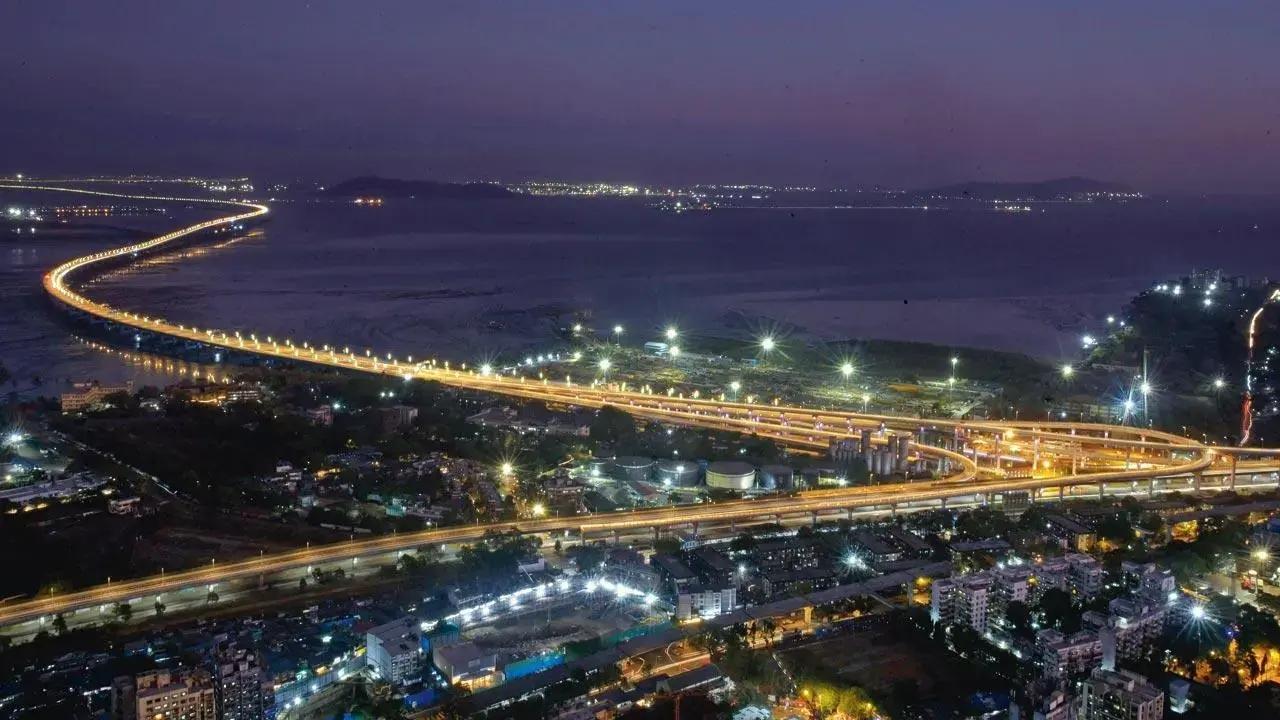
The Maharashtra State Road Transport Corporation (MSRTC) on Monday said it will operate four air-conditioned “Shivneri” buses between Mumbai and Pune via Mumbai Trans Harbour Link (MTHL) on an experimental basis from February 20.
The move will cut the travel time between the two cities by one hour, while the fare for the “Shivneri” buses will remain unchanged, the transport body stated in a release, according to newswire PTI.
As per the release, the “Shivneri” buses on the Pune railway station-Mantralaya and Swargate-Dadar routes, departing at 6.30 am and 7 am respectively, will reach Mumbai via MTHL and will be operated the same way on the return journey as well.
The buses will be plied via Panvel, Nhava-Sheva and Sewri to access the MTHL, the longest sea bridge in the country.
The bridge originates from Sewri in Mumbai and terminates at Nhava Sheva in Uran taluka of Raigad district.
MSRTC is one of the largest public transport bodies in the country, with a fleet of around 15,000 buses. More than 60 lakh passengers travel in these buses every day.
Meanwhile, Mumbai Trans Harbour Link (MTHL) sea bridge has recorded traffic of over 8 lakh vehicles as of February 15, as per the Mumbai Metropolitan Region Development Authority (MMRDA), reported news agency ANI.
The 21.8 km-long country`s longest Mumbai Trans Harbour Link between Nhava Sheva in Navi Mumbai and Sewri in Mumbai was inaugurated by Prime Minister Narendra Modi on January 12 and opened for the public on the very next day.
MMRDA Commissioner Sanjay Mukherjee, speaking to ANI, said that the vehicles passing without toll on the bridge have become a matter of serious concern.
“Nearly 4 per cent vehicles have gone without paying the toll since the inauguration of the bridge on January 12, with an average of Rs 30,000 per day on Atal Setu Bridge, and 4 per cent of the vehicles go without paying the toll naka, which remains a matter of concern for the authorities,” he said.
He further said that the journey from Mumbai to Navi Mumbai through this bridge has taken just 20 minutes.
“More than 8 lakh vehicles have passed on this bridge so far, the journey from Mumbai to Navi Mumbai through this bridge has become just 20 minutes,” he said.
Mukherjee further said that as many as 4 accidents took place on this bridge within a month, in which 5 people were injured, including one in serious condition.
“We have installed a world-class automatic traffic management system. It has 400 cameras, out of which 36 are installed under the bridge to keep an eye on the happenings there. Other cameras are high-resolution. They are not static; they move where there`s movement. It can even capture the number plate of a moving car…” he added.
He also said that there are thermal-sensitive cameras as well to keep a watch on vehicles in the absence of light or foggy conditions.
“Speed guns and calling centres have also been installed. The control room is functional 24/7…” he added.
The much-hyped Mumbai Trans Harbour Link sea bridge has also become a popular spot for people to take selfies by stopping their vehicles on the bridge, prompting police to take action.
Speaking on the same, Mukherjee said, “There was misinformation that the rescue rooms on the MTHL are actually selfie points. I would like to clarify that this is false, and please do not pay heed to such information…”
The 21.8-kilometre bridge of which 16.5 km is on the sea and remaining 5.5 viaducts on road on either sides provides end-to-end connectivity between Sewri, South Mumbai to Chirle Navi Mumbai. It has three interchanges at Sewri of South Mumbai, Ulwe and Chirle– both in Navi Mumbai. (With inputs from agencies)
#MSRTC #run #buses #Mumbai #Pune #MTHL #experiment #basis